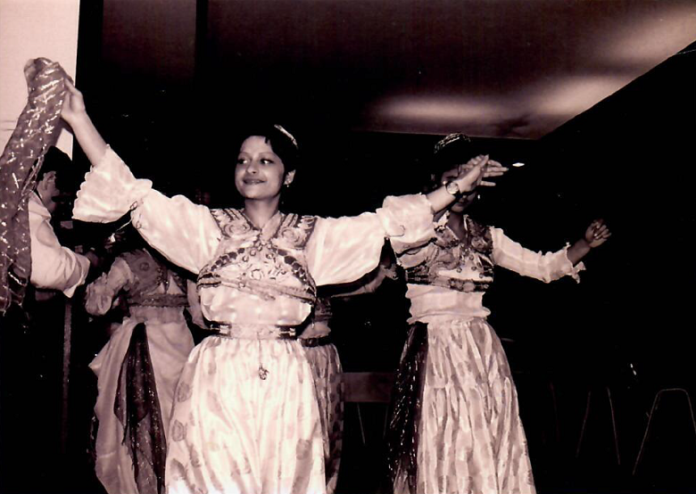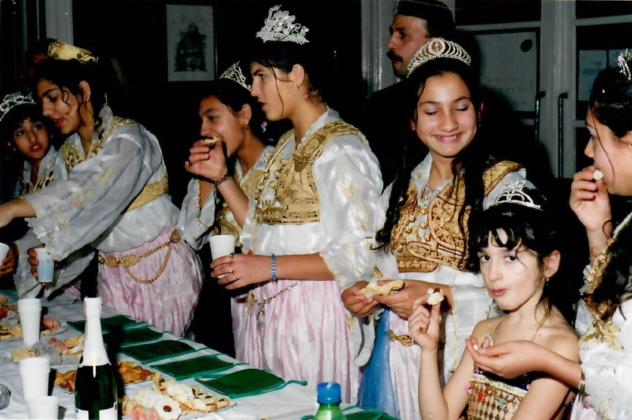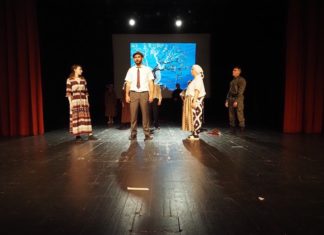It is a well-known fact that the existence of folk ensembles contributes to the preservation of traditional heritage and that is why Rromani folk ensembles promote old Rromani songs, present their folk costumes, and dance their folk dances in order to familiarize new generations with Rromani history and identity.
We interviewed three Rromani folk ensembles which work and create in this area about the cultural program they prepare and participate in the development of the cultural infrastructure network in the Croatian society.
Terne Romane Luluđa
Association of Rroma from Istria, which has been active since 1992, includes the Rromani folklore group Terna Romana Lulađa (Young Rroma Flower) where over two hundred young people have participated since its foundation in 1994. The leader of the group, Veli Huseini, tells us about some ten generations of folklore dancers in the Rromani group, and he himself has been active ever since 1985 when he was a Youth Secretary of the Rromani Society.
“We gladly remember the Festival of Yugoslav Rroma Cultural Achievements held in the city of Niš in 1982/1983. It was a truly wonderful event with a variety of dances and cultural tradition.”
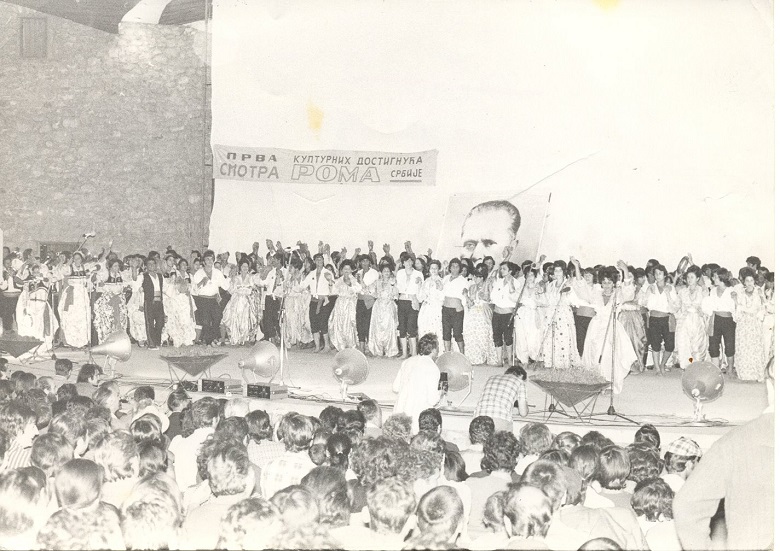
Huseini states that the Rromani group Terne Romane Luluđa is still very active today. Four times they performed at the International Lanciano Festival in Italy, and besides numerous performances throughout Croatia they also performed in the countries of the region – Slovenia, Bosnia and Herzegovina and Serbia.
Alongside Huseini’s leadership, young woman Anita Avdi from Vodnjan is a co-leader at the same time attending secondary school.
“I am very proud to be Velia’s co-leader of the Rromani folklore group. It’s not an easy task, it’s a lot of challenges and learning, but also fun.”
Since the Istrian Rroma community is mostly originating from Kosovo, Macedonia and Serbia, and of Islamic religion, Huseini states that their old costumes were used as inspiration, particularly in the case of harem pants, ankle-tied harem pants.
“We used to wear the typical harem pants measuring up to twelve meters of fabrics, then a hand-made shirt that was all made of silver fibre embroidered in gold or silver and a waistcoat called jelek. This is our representative folk costume and we show it as part of our traditional clothing during multiculturalism days in Istria.”
However, as they began to expand and moderate their program, and at the same time in order to make changes of clothes during their performances easier and more practical, they made salwar, long and very wide trousers with ankle-worn legs, with slightly less fabrics than the harem pants. Additionally, in order to honour their ancestral homeland India, they also have several saris, traditional women’s garment from India.
Terne Romane Luluđa is preparing performance on the occasion of the International Rromani Day to be held in London.
Rroma Resource Centre
Jovica Radosavljević, leader and choreographer of Rromani Folk Ensemble Darda, says that he is a rich man. A large number of volunteers gathered at the Rroma Resource Centre, once called Rromani Folk Ensemble Darda, the first registered Rromani Folk Ensemble in the area of Eastern Croatia, work on a daily bases in order to foster the culture and traditions of the Rroma from Baranya in the first place but others as well. The article is here.

Rroma Folk Ensemble Ludari
Rroma Folk Ensemble Ludar is more recently founded folk ensemble, in 2012, from Slavonski Brod. Its leader and choreographer Snježana Radić works hard to bring as many young people into the folklore group as possible.
“We were most enthusiastic about the performance on the occasion of the first celebration of the International Rromani Language Day, attended by participants from all over the world. We also like performing at the Evenings of National Minorities when we performed together with the Rroma Folk Ensemble Darda, today called Rroma Resource Centre, where we showed our shared tradition and traditional values.”
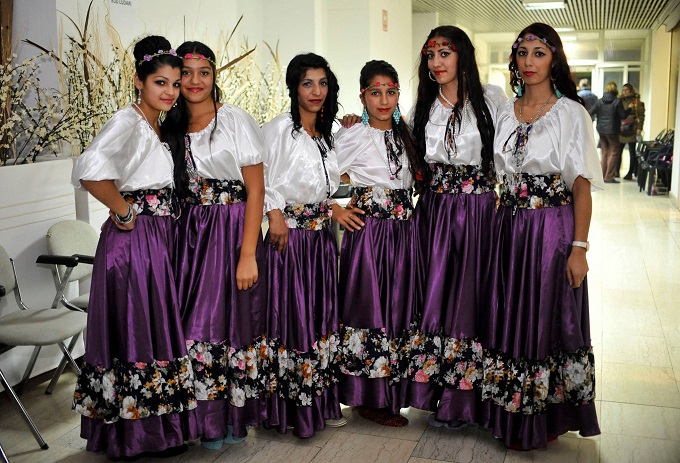
Rroma Folk Ensemble Ludar mostly performs choreographies inherent to Ludar Rroma. They have an imaginative approach to traditional dances and have introduced some new elements into dance steps. The Ensemble currently owns some ten equal folk costumes, elegantly made in purple colour.
“Our folk costumes were made by a seamstress from Slavonski Brod, but because of the lack of financial resources we have only these elegant folk costumes. Our wish is to make traditional clothing like the one our ancestors wore. Besides, we have a problem with our dance rehearsal space. I do not know whether there is any other folk ensemble in Croatia that rehearses only when the weather is nice, outdoors, under the open sky. My yard is both the rehearsal space and the office.”
Rroma Folk Ensemble Tradicija
Rroma Folk Ensemble Tradicija from Capraške Poljane has been faced with the same kind of challenges, whose members, together with their leader Stanko Nikolić, rehearse under his house patio overhang. The Folk Ensemble has been active since 2014, has about twenty members, and their folk costumes are made in Karlovac. Certain details like scarves and headscarves are bought abroad, where, as Stanko Nikolić says, there is a greater offer of traditional Rromani clothing.
“I can easily find scarves we use in our choreographies in Germany, and then we combine them with folk costumes in red, green and blue colour. Young people love to be members of folk ensembles, it fulfils them, gives them an opportunity to socialize, and travel around Croatia.”



